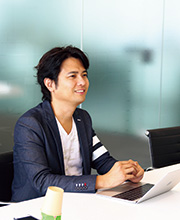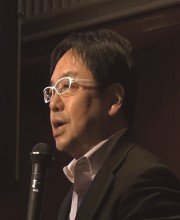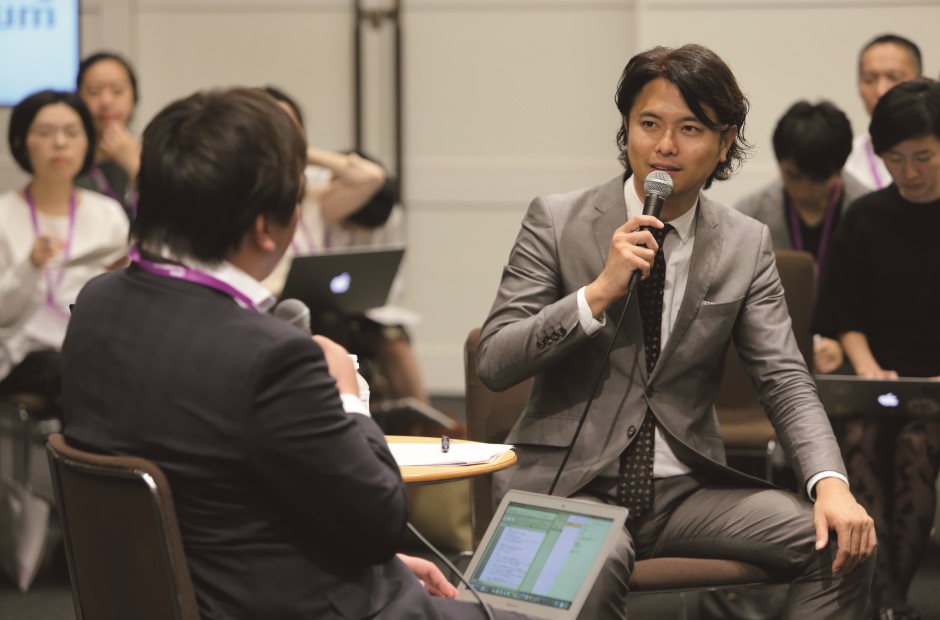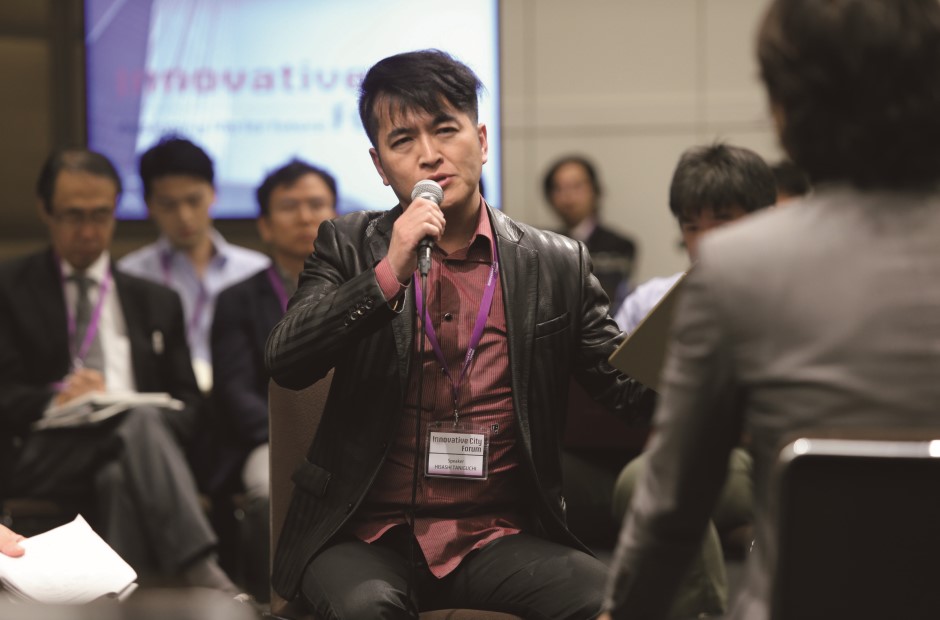Chief Editor, IoT NEWS
Future Mobility

Chief Editor, IoT NEWS

Visiting Associate Professor, Nagoya University


Future Mobility
Why and how will people move around? -Designing forms and ideals of mobility transformed by technology-
Relation with Mobility
Koizumi
We’re going to discuss topics such as autonomous driving and sharing economy in this session of Future Mobility. But first of all, I’d like the panelists to tell us how you’re related to these topics.
Nobe
Autonomous driving is made possible by creating an algorithm on a built-in computer and linking that with the server. Intel Corporation provides the computing power.
Taniguchi
Autonomous driving is about technology, but in order to have users actually use the technology, the service aspect becomes important. We at ZMP have established a company called Robot Taxi, and have conducted demonstration experiments on passenger services.
Kanaya
We at akippa transform vacant monthly parking lots or unused private parking space into metered parking which doesn’t require any costs. In order to keep the cost at zero, we remove the parking meters and have the users make reservations and payments on their smartphones.

Competitive domains and cooperative domains
Koizumi
European countries and the US and Japan have been competing in the development of autonomous vehicles. Are there any technological differences?
Nobe
In general, Japan is lagging behind somewhat. In addition, our rivals have more domains where they cooperate, for example, in the fields of mapping or telecommunication, whereas companies tend to work separately in Japan.
Taniguchi
When you look at it in a span of about 20 years, in the end, whether autonomous driving will be accepted widely as a kind of service is more important than its technology. Regulations will become the biggest issue in this regard. In countries where there are few regulations, there is likely to be innovation in service in order to be the first to introduce the new technology.
Kanaya
There are hardly any regulations on parking, so it should be quite easy.
Connection between autonomous cars and parking lots
Koizumi
Will the demand for parking lots decrease when autonomous cars become popular?
Kanaya
Level 4 vehicles can be a threat. As a company providing parking space, we must customize the parking lots by for example, letting the users use them to charge their cars’ batteries.
>Koizumi
What do you mean by levels of autonomous driving?
Nobe
In levels 1 and 2, one or several parts of the driving operations that are carried out by humans are automated. In levels 3 and 4, a computer checks for safety and runs the car. This is where we can call it autonomous driving. In level 3 circumstances, people operate the cars depending on the conditions, but in level 4, everything is completely automated with no human intervention.
Safety and service contents of autonomous cars
Koizumi
Can we trust the safety of autonomous cars?
Taniguchi
There are people with varying levels of skill and different emotions driving the cars, so there is always a possibility for an accident to happen even if you’re driving carefully. This is not the case with computers.
Nobe
Autonomous driving based on algorithms created by AI’s deep learning has the potential to provide much greater safety than that of regular human-driven vehicles. What is more, when data is acquired by one car it is shared by other cars as well, constantly increasing the general safety of autonomous cars.
Kanaya
Parking space is one part of such data. We at akippa, in collaboration with auto manufacturers, are considering incorporating a service where drivers can reserve parking space on their onboard navigation system. With this, the drivers can travel on the premise that they will have some space to park their cars.
Audience
With the implementation of automatic driving, is it possible for a mother to have her child driven to the nursery alone in a car in the morning, and on her way back from work, have the child again driven autonomously to the train station to be picked up? If it is, wouldn’t there be too many cars around the nurseries in the morning?
Taniguchi
Taxi companies are already providing service where they drive children to their destinations, but it is quite costly. With the implementation of autonomous cars, transportation costs will be lower, so it will be easier for the public to use such service. It is also possible to monitor how the child is doing in the car using the onboard camera. There is no need to worry about traffic congestion because the traffic will be controlled by computers.
Nobe
With everyone sharing their own information on where his/her car is at the moment, reports on traffic congestion will become more accurate, leading to a mitigation of congestion.
Impact on other transportation systems
Audience
Will fewer people use the trains?

Taniguchi
The number of passengers using short-distance trains, such as the Yamanote Line, and regular buses will probably be smaller. With the development of automated driving technology, such transportation will most likely shift to smaller units. On the other hand, long-distance and rapid transport systems, such as the Shinkansen, will undoubtedly continue to exist.
Koizumi
If the Yamanote Line users each ride a car separately, wouldn’t there be traffic congestion no matter how controlled the traffic may be?
Taniguchi
People concentrate in certain areas because the trains run on particular rails. In the case with cars, we can have countless rails, so the cars will be running on dispersed roads and the congestion will be eased.
Autonomous cars and driving speed
Audience
If we are not going to have any accidents even if we drive at a very high speed, our sense of speed might change all together. However, roads and buildings seem to be built to accommodate the conventional way of traveling. What kind of urban space do we need in the future?
Kanaya
In terms of space, I’d like to popularize valet parking. This would see a reduction in required parking space.
Taniguchi
As for speed limit, we should decide the limit according to the economic principle. People in a hurry can travel fast if they pay a fee, and those who want to keep the cost low can drive slowly.
Nobe
As for speed, we can also assume that the limit will be set on the basis of cars that are actually running because we will be accumulating safe “driving” information on individual roads.
Audience
What about the power source of autonomous vehicles?
Nobe
Electric vehicles are easier to control than internal combustion engine when a computer operates a car. We will most likely shift to electric vehicles in consideration of protecting the global environment too.
Mobility and work style
Koizumi
Will the way we work change as the way we travel changes?
Nobe
The current circumstances where the trains are crowded during the rush hours are causing a lot of inefficiency. In the future, society will allow people to work anywhere, and thus, there will be means of traveling that will accommodate their work style. There is also a need for the social structure to change integrally. Companies may have to change their working hours, for example. It is important that we can have people gather at an office, but at the same time, it is now possible to have face-to-face meetings using the Internet, too. How we work and how we travel will continue to change as they continue to influence each other.
Logistics and automatic driving
Audience
How will things be distributed?
Taniguchi
Physical distribution, coupled with labor shortage, is the biggest problem. A delivery person visits each household in an apartment now, but they are trying to apply autonomous driving to transporting goods by, for example, using small robots.
Kanaya
Delivery cars are in the greatest need of valet parking. They used to work in pairs in order to avoid getting a parking ticket, but labor costs were high. Autonomous driving can solve that problem.
Transition into the world of autonomous driving
Audience
How is the transition from level 3 to level 4 going to be made as a whole society?
Taniguchi
It depends on when we want to realize it. If we are to have level 4 cars running in 20 years, I believe the two levels can coexist. But it would take longer if we have to let the autonomous cars safely pass through intersections like the one in Shibuya.
Nobe
The practicality of autonomous vehicles also depends on the speed. If we are to run the last mile from the station to home in a suburb at or below 40km/h, it is easier to realize a driver-less, smart transportation.
Kanaya
In terms of parking lots, those which are one minute on foot from the stadiums are filled right away though they cost a little more than the ones which are five minutes away. I’d like to create a system where autonomous cars are pooled in parking lots near the stadiums and used to carry passengers over the last mile.
Audience
In what direction will the technological development be headed from now?
Nobe
Transporting passengers over a long distance and taking them to places in the neighborhood are different. The former wants to see automatic driving on at least the highways. The latter wants to have senior citizens riding cars in the vicinity to get home as a lifeline, or for the last-mile during a commute. For the time being, we will probably approach this from both sides, and eventually, the two will merge even in technical aspects.